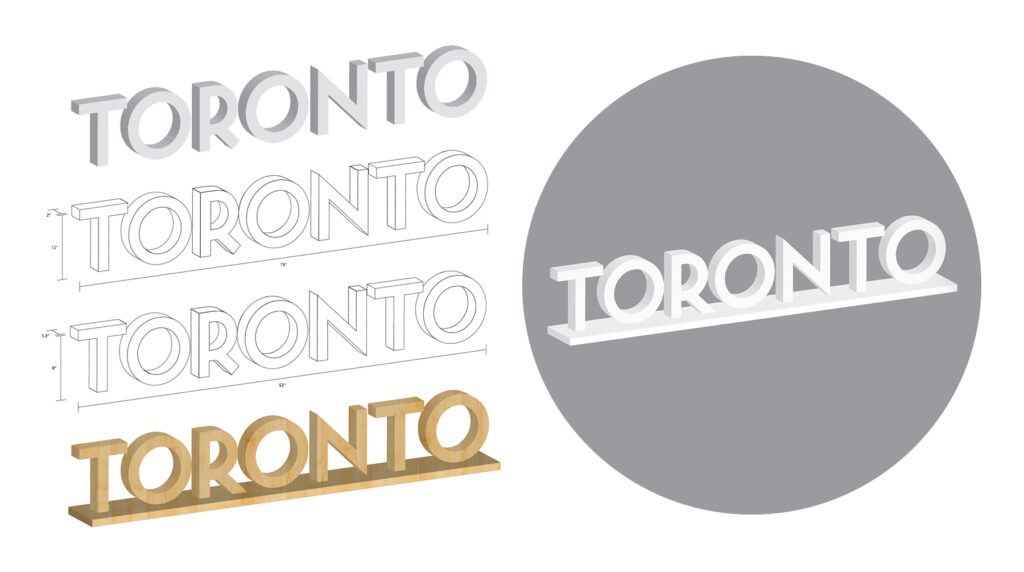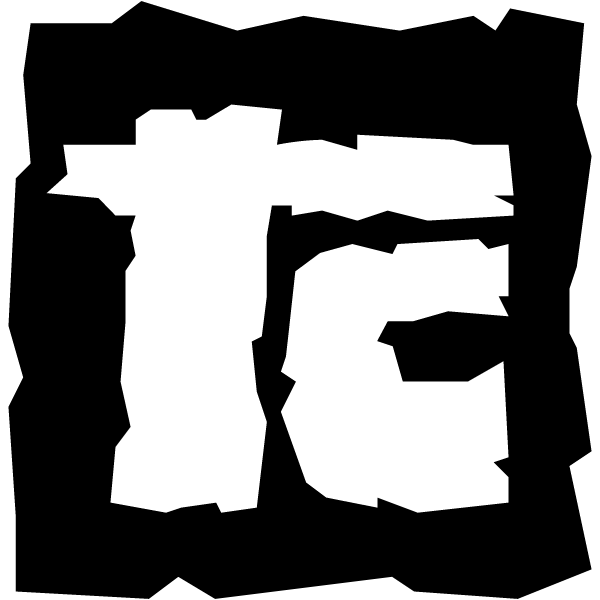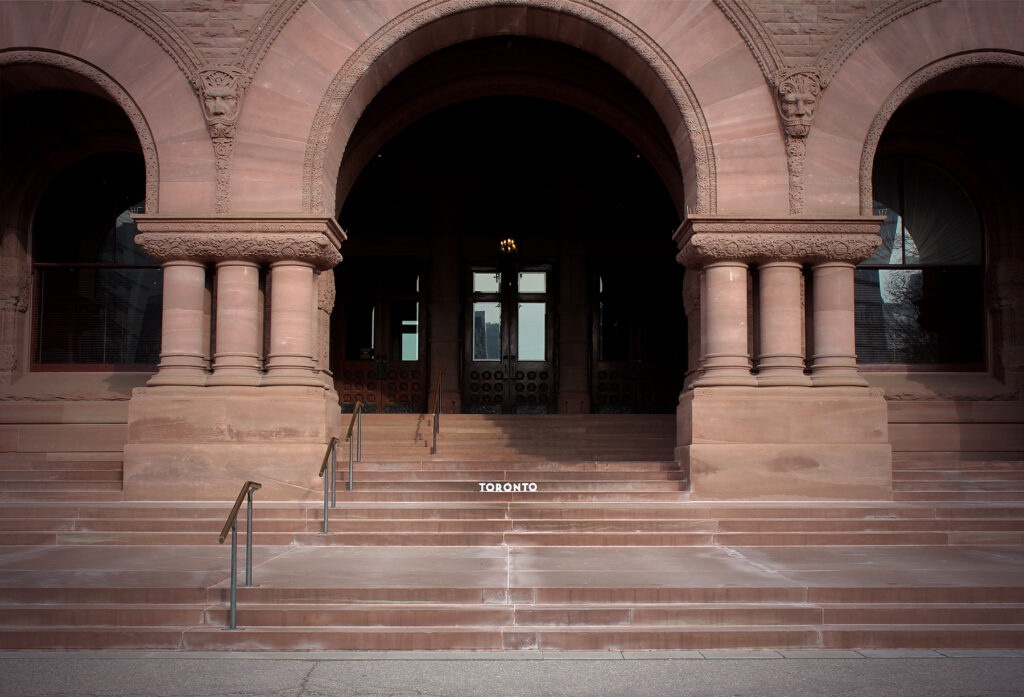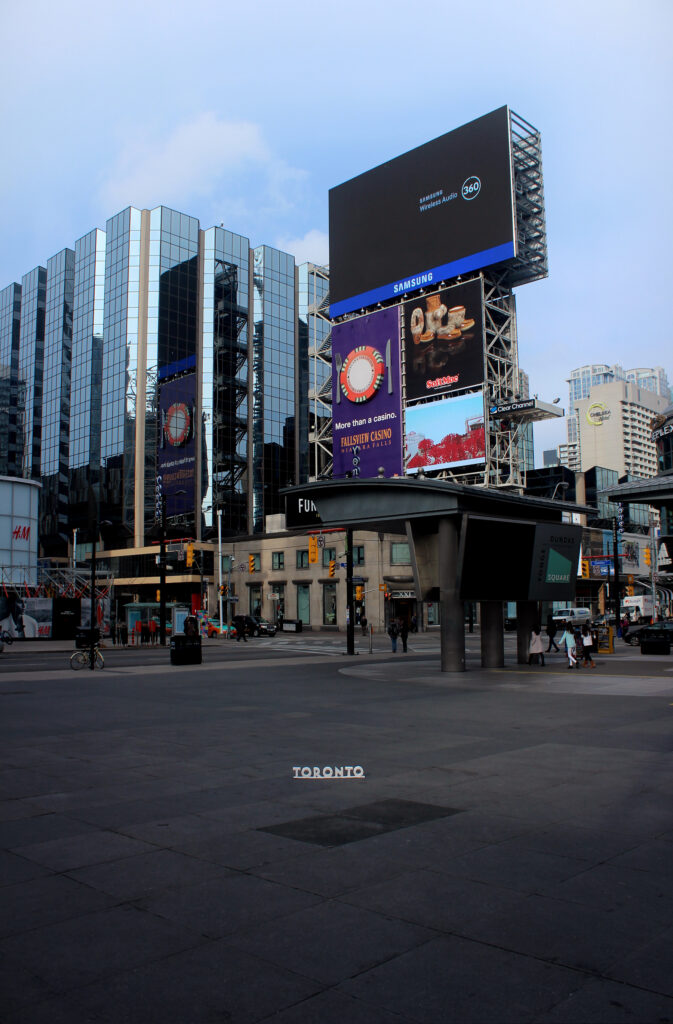



3-D Toronto Sign
Client: York University
This 3-D Toronto sign was developed as part of Visible Cities, my master’s thesis at York University and concurrent exhibition at Artscape Youngplace. Visible Cities critiqued visual city branding initiatives that appropriated, disregarded, or otherwise repurposed narratives or citizenship. These projects are often expensive, long-term, and top-down (with a vested interest in an international audience as opposed to one based in the locality in which they are situated). Toronto’s original 3D sign, developed for the Pan Am and Parapan Am Games, cost approximately $100,000 CAN, weighed over 20,000 lbs., and was built using a combination of steel, aluminum and translucent polycarbonate that had an intended 10-year lifespan. Its typeface, Azu Sans Bold, was licensed from Portuguese born-and-based designer Rui Abreu.
Apart from its overtly literal message, what this behemoth actually says about Toronto–the majority of whose population was born outside of Canada–seems unclear.
As an exploratory tactic, the above sign was designed to be low-cost, short-term, and responsive to narratives of citizenship. The sign accomplishes this literally: it is made using a light-weight plaster which can be written on like a cast (Coincidentally, the original 3D Toronto sign provoked the same response during Nuit Blanche 2016, an event that reimagines the city as an “artistic playground”).
What if we could talk about our cities the way we talk about ourselves?



